Keeping Your Log Cabin Dry: How to Prevent and Solve Dampness
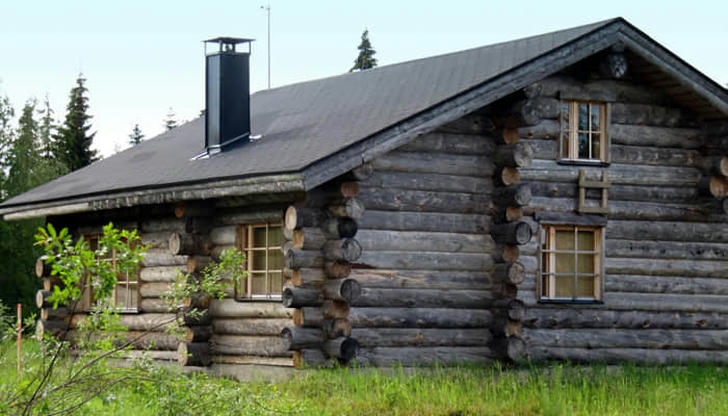
A log cabin is more than just a home—it’s a retreat, a peaceful haven to reconnect with nature. But nothing disrupts that peace like dampness creeping into your walls, bringing musty odors, mold, and even wood rot. Since log cabins are made of natural materials, they require special care to stay dry and well-preserved.
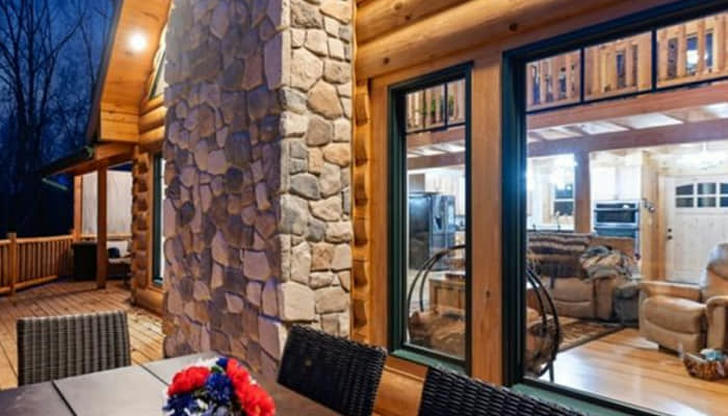
The good news? With a little attention and the right preventive measures, you can keep your cabin strong and moisture-free. Here’s how to do it.
1. Start with Smart Construction
If you’re building a log cabin, the first line of defense against dampness is getting the foundation and structure right. Here’s what you should consider:
Location: Choose an elevated location to prevent water from pooling around your cabin. Avoid building in low-lying areas where water tends to gather.
Foundation: Ensure your foundation is made of moisture-resistant materials, such as concrete piers or a raised platform, which keep the logs off the ground. Logs should never sit directly on damp soil.
Roof: A well-sealed roof with extended overhangs keeps rainwater away from your walls. Make sure the roof has a proper pitch to encourage water to run off.
Even if your cabin is already built, don’t worry—there are still plenty of ways to combat moisture.
2. Seal and Protect Your Logs
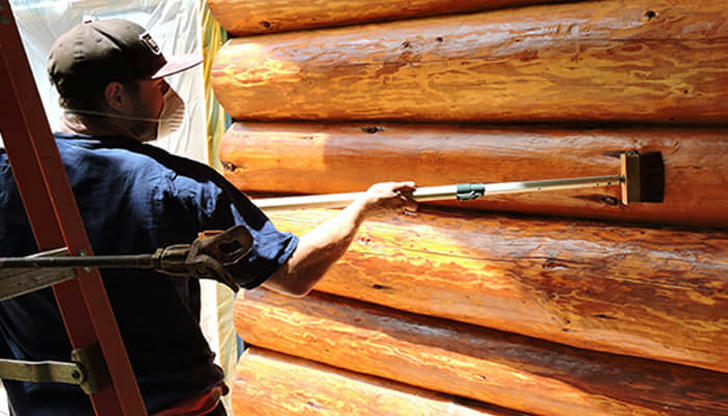
Wood naturally absorbs moisture, and dampness can cause the logs to expand, leading to rot. Here’s how to protect your logs:
Apply a Breathable Wood Sealant: Every 2-3 years, use a high-quality wood sealant that’s breathable. This will repel rain while allowing the wood to naturally expand and contract without trapping moisture.
Don’t Forget the Chinking: Over time, the chinking (the material between logs) can wear down. If you notice gaps, apply fresh chinking or caulk to prevent water from seeping in.
3. Keep Water Away from Your Cabin
Preventing water from coming into contact with your cabin’s foundation is key. Here’s how to make sure water stays away:
Clean Gutters: Regularly clear your gutters to ensure rainwater flows away from your cabin. Install downspouts that direct water far from the base.
French Drains and Gravel: If your cabin is in a low area or has poor drainage, consider installing a French drain or placing gravel around the perimeter to redirect water away from the foundation.
Inside your cabin, watch out for condensation, especially in kitchens and bathrooms. Use exhaust fans or a dehumidifier to control moisture in these areas and keep the air dry.
4. Ventilation is Key
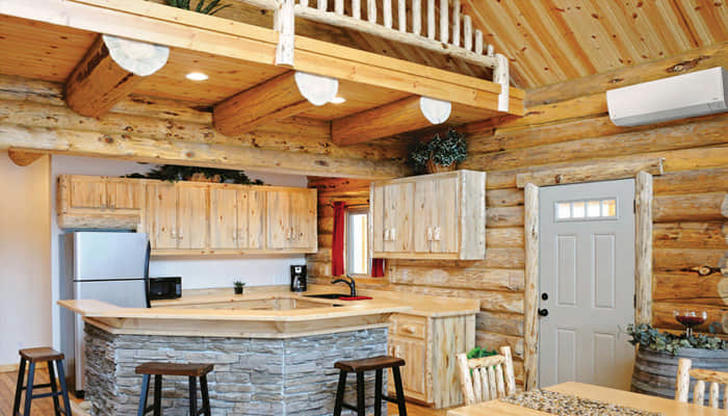
Good airflow is essential to keep your cabin dry and to prevent moisture from accumulating. Here's how to improve ventilation:
Open Windows Regularly: Fresh air is one of the best ways to prevent dampness. After cooking, showering, or using a humidifier, open your windows to let the moisture escape.
Crawl Spaces and Attics: If your cabin has a crawl space or attic, make sure these areas are properly ventilated. Consider installing vents to promote air circulation and reduce trapped humidity.
5. Watch for Early Signs of Moisture Damage
Catching moisture problems early can save you time and money. Look out for these signs of dampness:
Damp Spots on Walls
Peeling Paint or Finish
Musty Smells
If you notice any of these signs, take action immediately. You can sand down affected areas and reseal them to prevent further damage. If there’s significant damage, you may need to replace rotted sections and treat the wood with a borate-based preservative to stop further decay.
6. Mold? Stop It in Its Tracks
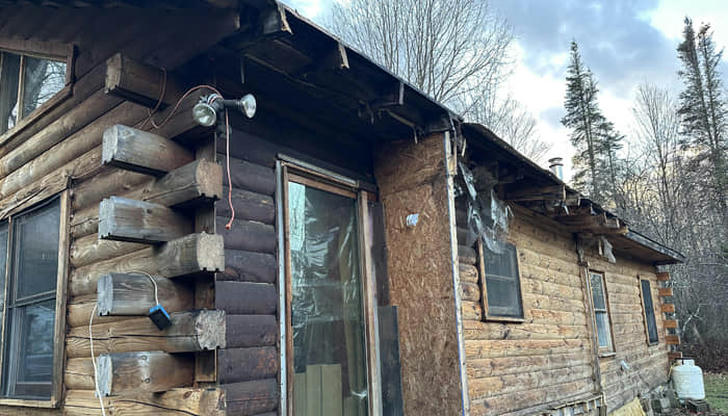
Mold can develop quickly in damp environments, but you can remove it before it spreads:
Clean Mold with Vinegar: A mixture of white vinegar and water can help kill mold on the surface without damaging the wood. Avoid bleach, as it can break down wood fibers.
Control Humidity: Mold thrives in high humidity, so keep indoor humidity levels under 50%. Use a dehumidifier to keep things dry, especially in humid areas like the basement or bathroom.
7. A Little Maintenance Goes a Long Way
Maintaining a dry log cabin doesn’t have to be difficult, but it does require consistency:
Inspect Regularly: Check the condition of the logs every season for any cracks, gaps, or signs of moisture. Fix small issues before they become big problems.
Reseal and Maintain: Apply sealant as needed and keep chinking in good condition. Consistent attention will keep your cabin dry and safe from dampness.
With these simple steps, your log cabin will remain warm, dry, and welcoming for years to come. By taking care of the little things, you can enjoy your retreat without worrying about mold, mildew, or wood rot.
